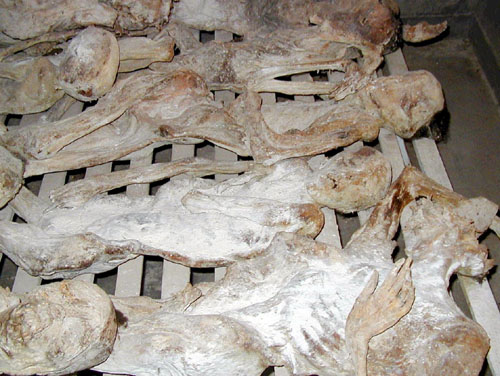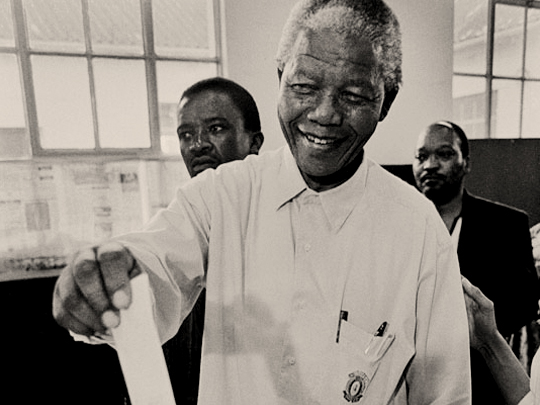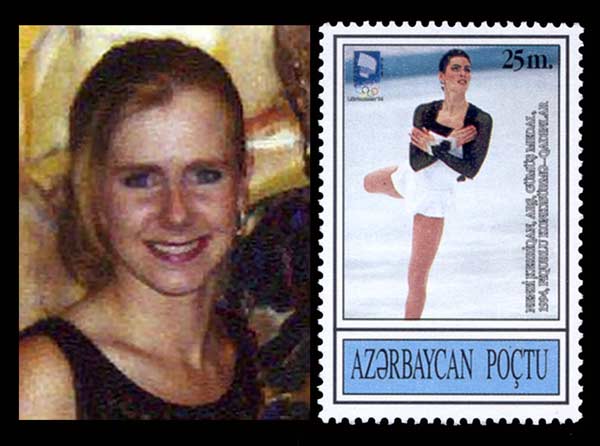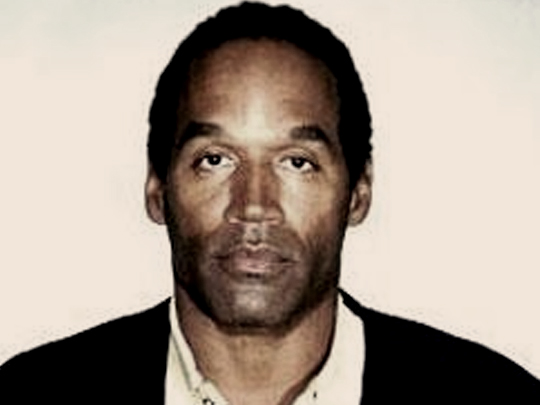By Peter K. Levy / Wikimedia Commons / CC-BY-SA-3.0 / GFDL
1 – The OJ Simpson Murder Trial
The O. J. Simpson murder trial was the case of legendary former NFL player and actor O. J. Simpson, who was tried on two counts of murder for the deaths of his ex-wife, Nicole Brown Simpson, and her friend, Ron Goldman, on 12 June 1994.
Just after midnight on 13 June, they were found dead outside Brown’s Los Angeles home.
They had multiple stab wounds in the head and neck, with Brown having such a bad neck wound, her head barely remained attached to her body. Simpson, a person of interest to police, did not turn himself in.
This resulted in a famous low-speed police pursuit of Simpson in a white Ford Bronco SUV driven by his close friend Al Cowlings on 17 June.
Coverage of the 1994 NBA Finals was even interrupted to broadcast the pursuit live, with it being watched by an estimated 95 million people. The pursuit and trial were among the most publicized events in U.S. history.
Simpson was represented by a high-profile defense team, referred to as the “Dream Team”, led initially by Robert Shapiro and later by Johnnie Cochran, and included Alan Dershowitz, Robert Kardashian, and Barry Scheck.
The trial spanned eleven months, from the jury being sworn in on 9 November 1994, to the verdict on 3 October 1995, when the jury acquitted Simpson on both counts of murder.
Following his acquittal, no additional arrests or convictions were ever made in relation to the murders.
Deputy District Attorneys Marcia Clark and Christopher Darden believed they had a clear cut case against Simpson, but Cochran was able to convince the jurors there was reasonable doubt about the DNA evidence, which was a relatively new form of evidence at the time.
Famously, the defense goaded the prosecution into getting Simpson to try on a leather glove, which had been found soaked in blood from Simpson, Brown, and Goldman.
The glove was too tight for him to put on, leading to Cochran infamously telling the jury, “If it doesn’t fit, you must acquit”.
The proposed reasoning behind the glove not fitting is that Simpson wore sanitary gloves underneath the glove and that Simpson had not taken his arthritis medication for a day, causing his joints to swell and inflammation in his hands.
The defense disputed this was the case, however.
The defense also made other allegations of misconduct by the LAPD in relation to systemic racism and the actions of Detective Mark Fuhrman.
By the end of the trial, national surveys showed a stark contrast in the assessment of Simpson’s guilt or innocence along racial lines. The majority of African Americans felt justice had been served, while most whites and Latinos felt that it had not.
The Brown and Goldman families subsequently filed a civil lawsuit against Simpson.
On February 4, 1997, the jury unanimously found Simpson responsible for both deaths, awarding the families damages totaling $33.5 million, but they have received only a fraction of that.
In 2007, Simpson was arrested in Las Vegas, and charged with armed robbery and kidnapping while trying to get back memorabilia he claimed had been stolen from him. He was sentenced to 33 years in prison but was released on 1 October 2017.
2 – The Rwandan Genocide

The Rwandan genocide was the mass slaughter of the Tutsi people, ordered by members of the Hutu majority government during the Rwandan Civil War for a period between April and July 1994.
It is estimated up to one million Rwandan people were killed, which accounted for up to 70% of the Tutsi population, and approx. 30% of the Pygmy Batwa also being killed.
The Rwandan Civil War began in 1990 between the Hutu-led government and the RPF. The RPF was made up largely of Tutsi refugees whose families had fled to Uganda after the Hutu revolted against colonial rule in 1959.
Following Rwandan independence in 1962, the Hutu carried out numerous violent offensives against the RPF and Tutsi, until international pressure led to a ceasefire in 1993.
On 6 April 1994, an airplane carrying Rwandan President Juvénal Habyarimana and Burundian President Cyprien Ntaryamira was shot down on its approach to Kigali. The assassinations ended the ceasefire.
The following day, the genocide began with soldiers, police, and militia killing key Tutsi and moderate Hutu leaders who could have assumed control in the power vacuum.
Checkpoints screened for holders of the national ID card, enabling the systematic identification and killing of Tutsis.
Hutu civilians were recruited and armed with machetes and clubs, encouraged to rape and kill their Tutsi neighbors and to destroy or steal their property.
The genocide came to an end after the Tutsi-backed Rwandan Patriotic Front (RPF) took control of the capital, Kigali, on 4 July, and the rest of the country by 18 July. Up to two million Rwandans, mostly Hutu were displaced and became refugees.
The widespread use of rape caused a sharp rise in HIV infection, while the mass slaughter of men and women, meant many households were headed by orphaned children.
The destruction of infrastructure and the massive depopulation also crippled the country’s economy.
The RPF’s victory prompted many Hutu to leave the country, primarily to Zaire (now the Democratic Republic of the Congo), where large Rwandan Hutu and Tutsi populations continue to live as refugees.
Hutu responsible for the mass killings began to regroup in refugee camps, resulting in RPF-led military incursions into Zaire, which resulted in the First and Second Congo Wars.
The genocide was one of the primary motives behind the establishment of the International Criminal Court in order to prosecute genocide, crimes against humanity, and war crimes.
3 – 8 Sworn in as South Africa’s First Black President

The presidency of Nelson Mandela began on 10 May 1994, when the anti-apartheid activist and former prisoner of 27 years, was inaugurated as President of South Africa after his African National Congress party had won 62% of the vote.
Mandela made history as the first non-white head of state in South African history.
He was also the first president to take office following the end of apartheid and the introduction of multiracial democracy. Mandela was also the country’s oldest head of state, taking office at the age of 75.
In 1995, South Africa hosted the Rugby World Cup, which they won after beating New Zealand in the final.
Mandela, wearing a Springbok shirt with captain Francois Pienaar’s number 6 on it, presented the trophy to Pienaar, who was an Afrikaner.
This gesture, along with the overall success of the tournament, was seen as a major step in the reconciliation between white and black South Africans.
Mandela only served as president for one term, leaving office on 14 June 1999.
4 – Ice Skater Nancy Kerrigan Is Attacked in Plot by Rival Tonya Harding’s Ex-Husband

On January 6, 1994, star U.S. figure skater Nancy Kerrigan was attacked the day before she was to compete at the U.S. Figure Skating Championships in Detroit.
The immediate aftermath of the attack was recorded and broadcast around the world, bringing Kerrigan international fame.
Having just finished a practice session at Cobo Arena, she was attacked with a police baton to her right thigh. The leg, while not broken, was severely bruised and forced her to withdraw from the competition and concede her U.S. Ladies’ title.
The assault was planned by Jeff Gillooly, the ex-husband of Kerrigan’s rival Tonya Harding, and Shawn Eckardt. The attacker was Shane Stant, with Derrick Smith as his getaway driver. They would all serve prison time for their roles in the attack.
In Kerrigan’s absence, Harding became the national champion but was later stripped of the title when the story behind the attack came to light.
Due to her new-found fame, Kerrigan was reported to have signed endorsement contracts worth millions within months of the incident.
The plan had been to break Kerrigan’s leg to prevent her from competing in the U.S. Championships and the 1994 Winter Olympics.
However, Kerrigan recovered quickly and both women were selected to compete at the Winter Games, where Kerrigan won a silver medal and Harding finished eighth.
After the Games, Harding denied she had any involvement in the attack but pleaded guilty to conspiring to hinder the prosecution. She was then banned for life from the U.S. Figure Skating Association on 30 June 1994.
Harding went on to compete as a professional boxer in the early 2000s, while Kerrigan was inducted into the United States Figure Skating Hall of Fame in 2004. The attack is depicted in the 2017 film, I, Tonya.









